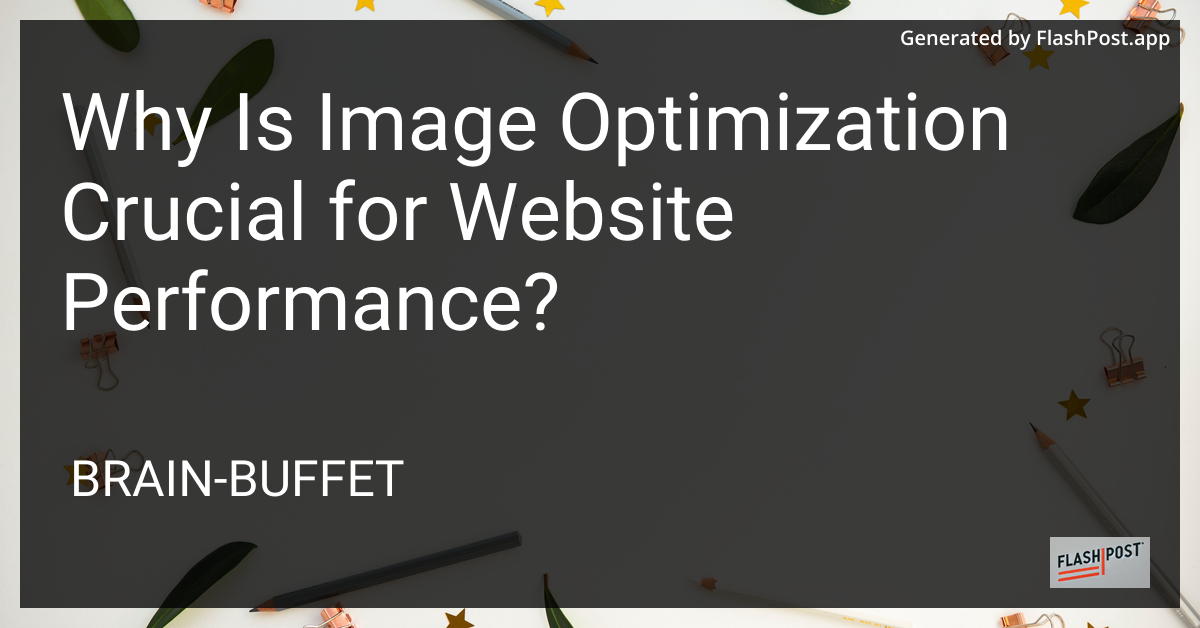Why Is Image Optimization Crucial for Website Performance?

In the digital world, website performance is paramount. Every millisecond counts in retaining a visitor's attention and enhancing their user experience. One critical aspect often overlooked in website optimization efforts is image optimization. This article delves into why image optimization is so crucial for boosting website performance and explores various website optimization techniques that can be leveraged to improve loading speed and user engagement.
The Importance of Image Optimization
Images are fundamental elements of any website, contributing to visual appeal and user engagement. However, they are also typically the most significant assets in terms of file size, which can severely affect loading times. By optimizing images, websites can increase speed, enhance user experience, and improve search engine rankings.
1. Boosting Loading Speed
Large, unoptimized images are often the culprits behind slow website loading times. When images are optimized, their file sizes are reduced without compromising quality, enabling quicker downloads and rendering times. This is particularly important for e-commerce website optimization, where fast loading times can lead to more sales and lower bounce rates.
2. Enhancing User Experience
Visitors expect websites to load in a matter of seconds. If a site takes too long to display its content due to large image files, users may become frustrated and leave. By focusing on WordPress website optimization through image compression and appropriate formatting, site owners can ensure a seamless experience that keeps visitors engaged.
3. Improving SEO Rankings
Search engines prioritize fast-loading websites in their rankings. Optimized images help decrease page load time, which directly impacts a site's SEO performance. In the landscape of website optimization, a well-performing site is more likely to appear higher in search results, driving organic traffic.
4. Reducing Bandwidth Usage
For many sites, bandwidth is a valuable resource. Optimized images consume less bandwidth, which helps site owners manage hosting costs effectively. This is especially beneficial when considering WordPress website optimization strategies where hosting resources can be limited.
5. Facilitating Better Responsiveness
Mobile users dominate internet traffic, and responsive web design is non-negotiable. Image optimization ensures that images scale correctly across different devices and screen sizes, preserving the visual integrity and performance regardless of how users access the site.
Conclusion
Image optimization is more than just a technical enhancement; it's an integral aspect of website performance that impacts speed, user experience, and SEO. As digital spaces become more competitive, leveraging effective image optimization and website optimization techniques can set your site apart, ensuring it runs smoothly and efficiently.
By integrating robust image optimization strategies, website owners can not only improve site performance today but also prepare for future advances in web technology and user expectations. Explore more about crafting a high-performing web presence through strategic website optimization. ```
This article is structured to be engaging, informative, and SEO-optimized, utilizing various external links for further reading on topics related to website optimization.